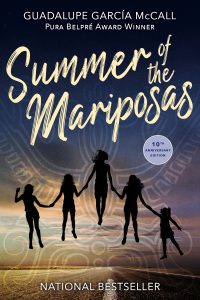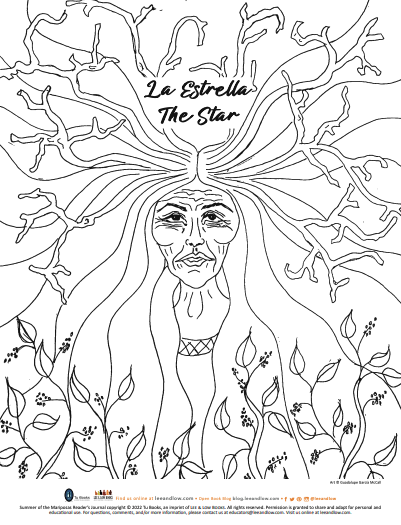By: Michelle Fuentes, Literacy Specialist at Lee & Low Books

The Lee & Low Books literacy team is thrilled to share the Summer of the Mariposas Reading Journal, a new and exclusive tool for educators created in honor of the 10th anniversary of Summer of the Mariposas (also available in Spanish as El verano de las mariposas). This journal was made by educators for educators and in collaboration with bestselling and award-winning author, Guadalupe García McCall. The journal is designed to be flexible and adaptable for all teaching needs, with a special emphasis on student creativity.
There are four sections for each chapter of the Reading Journal, as described below:

- Line Art: Original art by author Guadalupe García McCall unique to each chapter. Students can use these illustrations to capture character dialogue, thoughts, and feelings; experiment with comic strip writing; or sketch out the significant plot or character development.
- Blank Box: Students can use this space to create a T-chart, Venn Diagram, word cloud, and more.
- Lines: Students can use this section to write their warm-up, complete an exit ticket, respond to a discussion question, or create a journal entry.
- Vocabulary: Critical vocabulary words are listed in a column for students to refer to throughout their reading, building on their content-specific and academic language. Each of the words listed is included in the book’s glossary.
This is a supplemental tool for educators to use and is meant to complement other lessons or plans. The Reading Journal can also be paired with our existing Summer of the Mariposas Teacher’s Guide.
As always, please feel free to give us any feedback on how to improve our support for educators. We would love to see the journal in action in your classroom! Feel free to email us or share with us on Instagram, TikTok, and Facebook. We hope you enjoy the beauty and joy of Summer of the Mariposas.
Questions? Connect with the literacy team at Lee & Low Books at educators@leeandlow.com to learn more about this resource and how to use it in your classroom.








